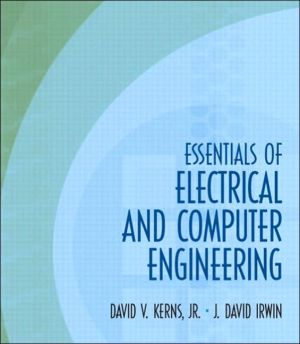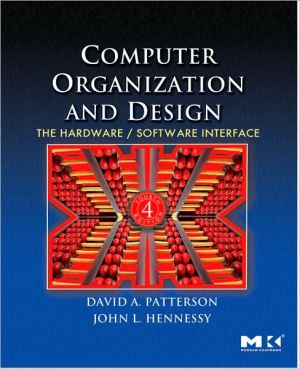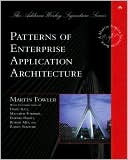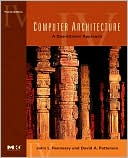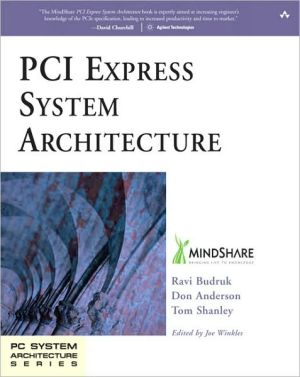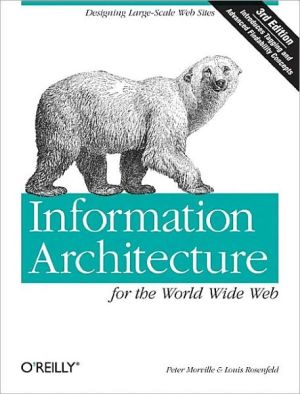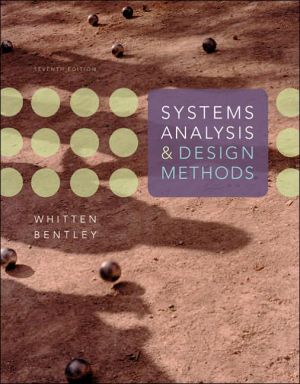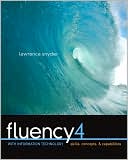The Essentials of Electrical and Computer Engineering
With sound, practically-oriented coverage of all the basic concepts in electrical engineering, the second edition of this book represents the best balanced general introduction to the field available. It superbly integrates conceptual discussions with current, relevant technological applications. This text clearly presents the fundamentals in the context of various applications from all engineering fields. It also introduces and utilizes the latest technologies to illustrate how modern...
Search in google:
Intended for all freshman engineering students, this textbook introduces circuits, electronics, and electromechanical systems in the context of various applications drawn from all engineering fields, covering the essential elements needed to pass the electrical engineering portion of the Fundamentals of Engineering (FE) exam. Steady-state power analysis, amplifiers, semiconductors, switches, and digital logic circuits are among the technologies described. Annotation © 2004 Book News, Inc., Portland, OR
(NOTE: Each chapter begins with Introduction and concludes with Summary and Problems.)Preface.1. Introduction.Overview. Basic Concepts.I. CIRCUITS.2. DC Circuits.Ohm's Law. Kirchhoff's Law. Single-Loop Circuits. Single-Node-Pair Circuits. Resistor Combinations. Nodal Analysis. Loop and Mesh Analysis. Superposition. Source Exchange. Thevenin's and Norton's Theorems. Measurements and the Wheatstone Bridge.3. Transient Analysis.Capacitors and Inductors. First Order Circuits. Second-Order Circuits.4. AC Steady State Analysis.Sinusoidal Functions. The Sinusoidal Function/Complex Number Connection. Phasor Relationships for Circuit Elements. Impedance and Admittance. Y Δ Transformations. Basic Analysis Using Kirchhoff's Laws. Nodal Analysis. Mesh and Loop Analysis. Superposition. Source Transformation. Thevenin's and Norton's Theorems. Nonsinusoidal Steady State Response.5. Steady State Power Analysis.Instantaneous Power. Average Power. Effective or RMS Values. The Power Factor. Complex Power. Power Factor Correction. Typical Residential AC Power Circuits. Three-Phase Circuits.6. Magnetically Coupled Circuits and Transformers.Magnetic Circuits. Mutual Inductance. The Linear Transformer. The Ideal Transformer. Transformer Applications.7. Network Frequency Characteristics.Sinusoidal Frequency Analysis. Passive Filter Networks. Resonant Circuits.II. ELECTRONICS.8. Introduction to Electronics.Energy and Power. Analog and Digital Systems; Signals and Pulses. Analog Systems; Amplifiers and Gain. Modulation and Demodulation; Encoding and Decoding. Digital Systems; Information, Sampling and Logic Gates. Electronic Instrumentation and Measurement Systems.9. Operational Amplifiers (OpAmps).The Ideal Op Amp. The Noninverting Amplifier. The Unity-Gain Buffer. The Inverting Amplifier. The Principle of Negative Feedback. The Differential Amplifier. The Summing Circuit. The Integrator. The Active Filter. The Current-to-Voltage Convertor. The Nonideal Op-Amp.10. Semiconductors, Diodes, and Power Supplies.P- and N- Type Semiconductors. Current Conduction in Semiconductors. The p-n Junction Diode. Diode Circuit Models. Power Supply Circuits. Wave Shaping: Clippers and Clampers. The Zener or Avalanche Diode. Load Lines and Graphical Solutions. Photodiodes and Light Emitting Diodes.11. Transistor Fundamentals: Switches, Large-Signal Amplifiers and Power Electronics.MOSFET Fundamentals. MOSFET Output Curves and Regions of Operation. The NOT Gate: MOSFET Implementation. Other FET Types. Large Signal Amplifiers: Using the MOSFET. BJT Fundamentals. BJT Output Curves. The NOT Gate: BJT Implemenatation. Large-Signal Amplifiers: Using the BJT. Power and Voltage Limits of MOSFETs and BJTs. Thyristors, Silicon-Controlled Rectifiers (SCRs) and Motor Control.12. Small Signal Transistor Amplifiers.General Linear Two-Port Models. The MOSFET Small-Signal Model. MOSFET Amplifier Circuits: Small-Signal Analysis. Voltage Gain Loss at the Input. The BJT Small-Signal Model. BJT Amplifier Circuits: Small Signal Analysis. Multi-Stage Amplifiers.13. Digital Logic Circuits.Number Systems. Boolean Algebra. Truth Tables. Switching Networks. Canonical Forms. Function Minimization. Combinatorial Logic Design. Sequential Logic Circuits.14. Digital Electronic Logic Gates.Review of Ideal Logic Gates. Real Logic Gates: Speed, Noise Margin, and Fanout. Basic Logic Gates Using Relays. Basic Logic Gates Using MOSFETs. Basic Logic Gates Using BJTs.III. ELECTROMECHANICAL SYSTEMS.15. DC Machines.Fundamental Concepts. A Simple Rotating Machine. The Basic DC Machine. Equivalent Circuits and Analysis.16. AC Polyphase Machines.The Revolving Magnetic Field. The Polyphase Induction Machine: Balanced Operation. The Polyphase Synchronous Machine: Balanced Operation. AC Machine Applications.Appendix A: Complex Numbers.Appendix B: Linear Algebra and Cramer's Rule.Appendix C: Fundamentals of Engineering (FE) Exam Review.
